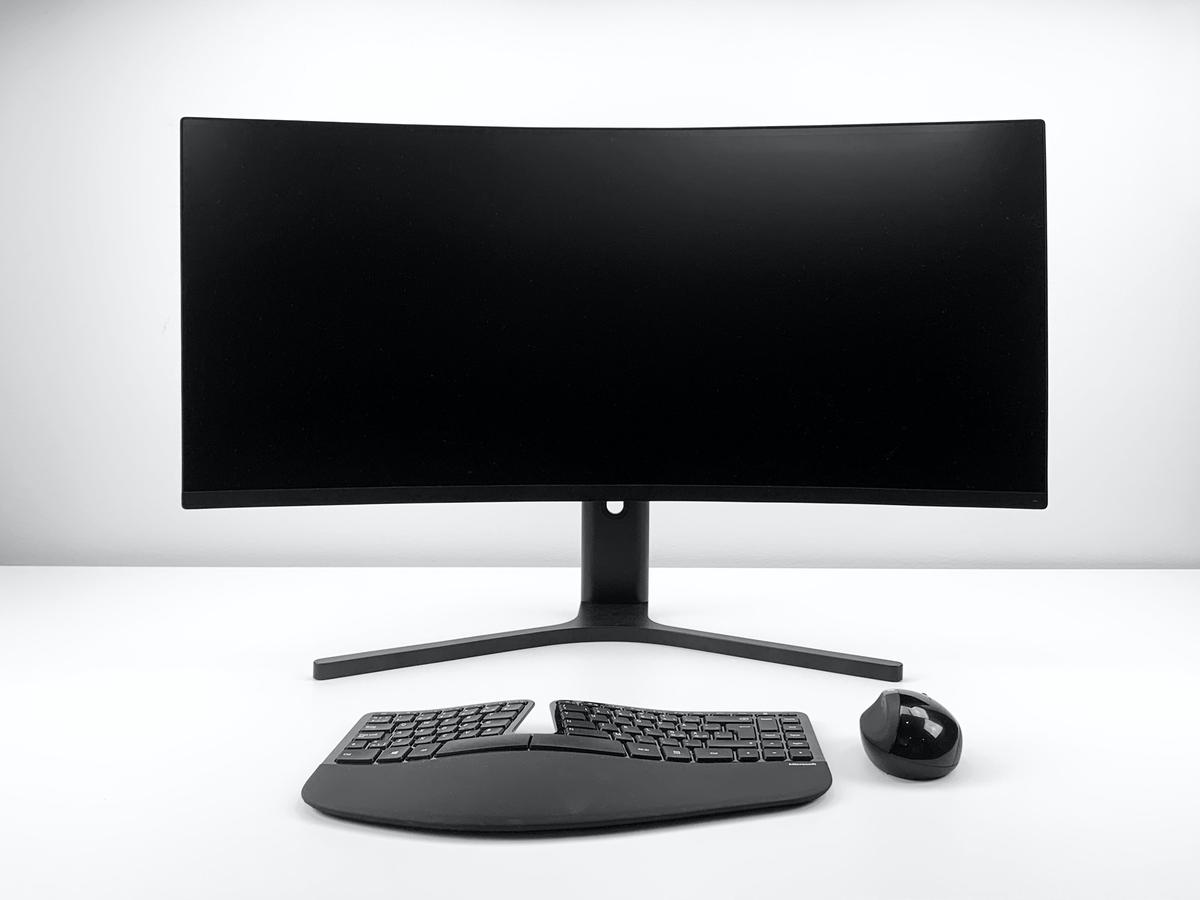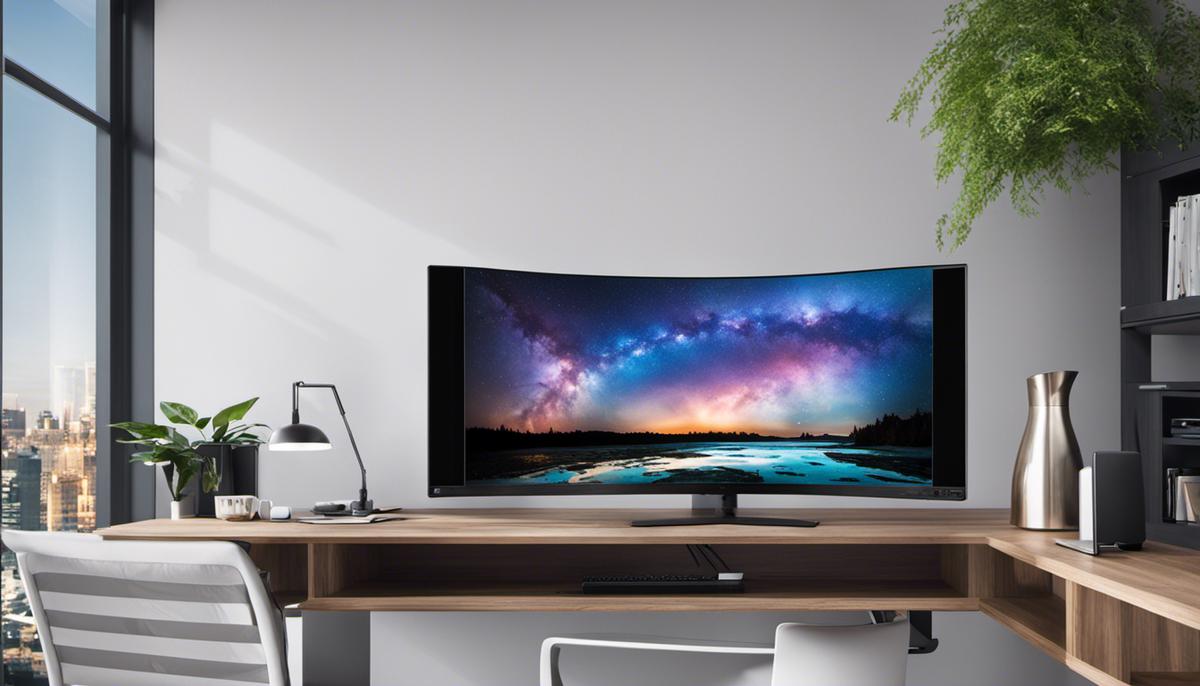As technology continues to evolve, so too do the tools we use to interact with it, prompting a seismic shift in the landscape of digital displays. The flat screens that once defined modern tech aesthetics are gradually giving way to the revolution of curved monitors. However, this new trend has sparked a lively debate among tech enthusiasts, designers, gamers, and everyday users about the tangible benefits of curved vs flat monitors. With considerations ranging from technological aptitude to functional efficiency and from economic value to perceptual differences, the conversation is rife with numerous viewpoints and plentiful in detail. This piece aims to cut through this noise by providing a streamlined analysis of the complex dynamics at play in this fascinating discussion.
Table of Contents
Technological Aspects of Curved and Flat Monitors
Exploring The Technological Differences Between Curved And Flat Monitors
In today’s fast-paced technology-centered world, choosing the right monitor can surprisingly make a significant difference in enhancing day-to-day productivity and the overall computing experience. In particular, the choice between a curved monitor and flat screen has become a hot topic of conversation amongst tech-savvy individuals given the distinct features each brings. It’s essential to delve into the technological specifics that differentiate these two types of monitors.
1. Display Mechanics
At a fundamental level, the difference lies in the design structure. Flat screens are the traditional model with a straight, flat panel while curved monitors, as the name suggests, have a curved panel. The design distinction may seem minimal, but it accounts for significant differences in the viewing experience.
2. Viewing Comfort and Experience
Curved monitors create a panoramic effect, effectively wrapping content around the viewer and emanating a sense of immersion. This results from the uniform viewing distance, where all points of the screen are equidistant from the eyes, thereby reducing distortion. Unlike flat screens, the curvature of the screen mimics the natural field of human vision, providing a broad sense of real-life viewing and potentially reducing eye strain.
3. Visual Appeal and Depth
Curved monitors offer a distinct depth of field, enhancing the perception of depth in images and videos. This nuanced 3D effect provides a more realistic viewing experience. Conversely, flat monitors lack depth, presenting graphics and media in a two-dimensional perspective.
4. View Angles and Reflections
Concerning the issue of viewing angles, curved monitors typically provide better wide-angle viewing than their flat counterparts, allowing the viewer to see more content up-close. However, the curved nature may exploit the issue of screen glare depending on the light source location.
5. Gaming and Professional Application
As far as applications go, each type has its strengths. Curved monitors provide gamers a more engaging and immersive experience. Additionally, professionals in video editing, graphic design, and programming tend to favor the extended field of view provided by curved monitors. On the other hand, flat screens are a versatile choice across different sectors and applications due primarily to their consistency for color grading across the screen.
In conclusion, the technological distinctions between curved and flat screens go beyond a mere design preference. It extends into viewing experience, visual appeal, viewing angles, and application value. Understanding these differences will allow for a more informed decision when it comes to choosing the monitor that meets specific needs and preferences. It’s certainly about more than aesthetics – it’s about enhancing the digital interaction experience in a world increasingly reliant on screen-based technology.

Photo by mediamodifier on Unsplash
Perceptual & Functional Differences
The Curved vs. Flat Monitor Debate: The Differential Factors
While the previous discussion denotes the visual appeal, viewing comfort, and gaming experience of monitor shapes, the contrast between curved and flat screens can be further defined by other factors, notably functionality and user perception. These factors, while overlooked, play crucial roles in identifying the best monitor companion for your tech requirements.
Starting off with user immersion, curved monitors provide a wraparound effect that enhances user connectivity with virtual environments. This unique attribute is particularly appreciated in gaming populations, as well as users who indulge in streaming video content as it amplifies the immersive factor of visuals, ensnaring users in a game-like environment to elevate the overall entertainment factor.
From a technological standpoint, curved screens are innovatively designed to match the natural contouring of human eyes. This concept, known as field of view (FOV), subtly pulls peripheral images into focus for a more immersive experience. In contrast, flat screens have a conventional perspective, demanding more effort from the user’s sense of sight to scan across multiple focal points.
Portability compares as another distinguishing factor between flat and curved monitors. Despite similar sizes, flat monitors are typically lighter, thinner, and easier to move around, making them a favorable choice for spatially-restrictive environments or offices frequently requiring desk shuffling. On the other hand, curved monitors, though not entirely portable, indulge users with a sense of spaciousness by maximizing screen real estate, an attribute advantageous in multi-window workflows and panoramic gaming experiences.
Admittedly, pricing remains a distinct differentiator between curved and flat monitors. Owing to the advanced technology and manufacturing processes, curved monitors are comparably pricey. However, users pay for the immersive experiences this screen type provides, justifying the premium price tag. Meanwhile, flat screens are available in a broad price spectrum, providing more options to users with varying budget considerations.
In terms of visual precision, graphic designers and creatives often side with flat monitors. Unlike curved screens that can warp straight lines, flat ones remain true to geometry, hence playing a crucial part in precision-dependent industries like architecture, graphic design, and CAD operations. Therefore, the choice between curved versus flat is fundamentally influenced by the professional application involved.
To sum up, the choice between curved and flat monitors is not a simple aesthetics one. It’s important to assess one’s needs and preferences considering immersion, eye comfort, spatial constraints, price, and professional applications. While these factors may seem trivial in the face of design, resolution, or even brand selection, understanding these differences can guide one to an optimal technology purchase. It clearly extends the debate from being a mere gimmick to an actual value proposition, rationalizing both perceptions: novelty and need-based.

Cost & Value Analysis
One significant aspect that hasn’t been touched upon yet, in the debate between curved monitors versus their flat counterparts, is the immersive experience offered by curved screens.
But what does this buzzword actually mean? ‘Immersive experience’ refers to a setting or environment that virtually wraps itself around you, drawing you in.
In terms of technology and digital displays, this could equate to a cinema-like experience where the contents of the screen almost engross you.
A curved monitor’s design can enhance depth perception by offering a consistent and uninterrupted view, elements that can take both movie and gaming experiences up a few notches.
Curved screens are designed to match our eyes’ natural curvature, making them less straining to the eyes compared to flat monitors.
This makes a significant difference in terms of prolonged usage. Anyone spending large chunks of time in front of a screen, say gamers, or others working round the clock, may find curved monitors a wise investment for improved ocular comfort.
Talking about the versatility, flat screens take the front seat when considering portability. Flat monitors are less bulky, easier to handle, and can be set up in various environments with relative ease.
Conversely, curved monitors require a more precise setup to take full advantage of their immersive viewing capabilities.
They may not make the ideal choice for a constantly shifting, fast-paced workspace.
As far as cost is concerned, curved monitors typically carry a higher price tag compared to flat screens, given their advanced technology and features.
However, it is important to consider cost within the context of value.
Yes, flat screens tend to be more budget-friendly, but the heightened viewing experience and potential comfort benefits offered by curved monitors may justify the extra cost for some users.
Accuracy is a crucial requirement for certain professions like graphic design, architecture, and photo-editing.
Here, flat screens have traditionally reigned supreme due to the lack of distortion at the edges, ensuring precision and reliability.
Curved monitors, on the other hand, can introduce subtle distortion at the edges, though this is generally not noticeable unless working on tasks that require exact accuracy.
Finally, it is essential to underscore that the choice between a curved monitor and a flat one largely boils down to individual preference and need.
Some may find curved monitors more aesthetically pleasing and visually comfortable, while others might prefer the reliability and simplicity of flat screens.
The workspace environment, nature of tasks performed, and the amount of time spent in front of the screen, are all factors to consider when making this decision.
Therefore, the question isn’t necessarily whether curved monitors are worth the additional cost over the flat ones, but rather, are they worth it to you?

The ever-evolving tech market presents no definitive answers in the comparison between curved and flat monitors. User preference ultimately determines the real value of these advanced devices. Still, subjective experiences and objective analysis of factors such as resolution, screen curvature, viewing angles, usability, and cost all play a role in shaping these preferences. The exploration of these parameters thus offers invaluable insights not only into the functional capacities and technological prowess of these monitors but also into our own individual needs and requirements that guide our choices in this digital era. It invites us to delve deeper into the intricate web woven by our interactive tools to truly understand their potential and the impact on our personal or professional lives.

Matt Smith is a seasoned journalist and author whose expertise spans across the dynamic realms of Politics, Gadgets, Gaming, and a plethora of general interest topics. With a Master’s in Political science and tech pedigree shaped in Silicon Valley, Matt brings a wealth of knowledge and a critical eye to everything he writes.
Politics: Matt offers sharp political commentary, drawing from his experience as a political analyst and his academic rigor.
Gadgets: His tech insights are grounded in real-world experience, having been on the front lines of innovation with a degree from Caltech.
Gaming: A respected voice in gaming, Matt’s reviews and trend analyses are a testament to his deep involvement in the gaming community.
General Topics: From science to culture, Matt’s writing spans a broad spectrum, engaging readers with a blend of expertise and relatable prose.
Engage with Matt’s compelling content for a fresh perspective on the issues at the forefront of today’s discourse.

